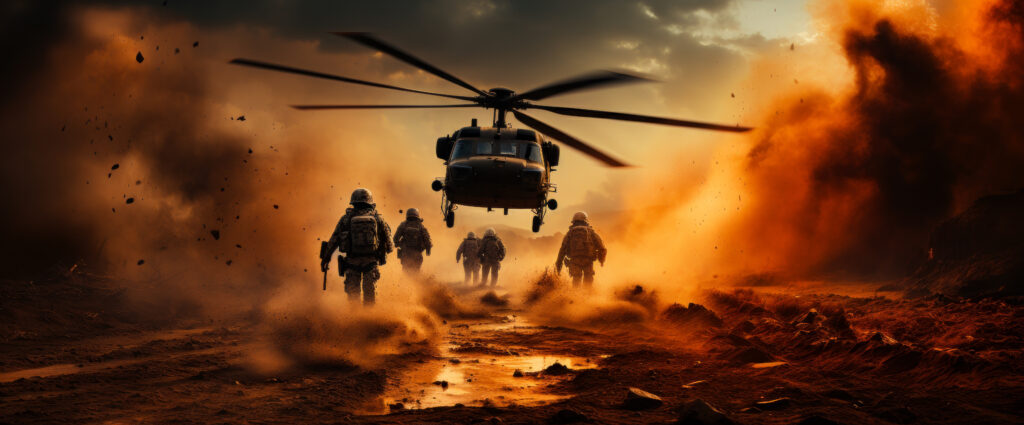Test Flight Attendant To War Uniform, Colors, Civil, C & C Sutlery Civil ⏬👇🏻

Best Flight Attendant To War Uniform
Embarking on a journey through the skies not only promises adventure but also a chance to witness the epitome of style at 35,000 feet – the flight attendant uniform. These uniforms go beyond mere attire; they symbolize the airline’s identity and ethos, encapsulating elegance, functionality, and comfort. The best flight attendant uniforms strike a harmonious balance between chic sophistication and practical design, allowing cabin crew to perform their duties with poise and grace. From the iconic pencil skirts and tailored blazers to the modern interpretations with breathable fabrics and ergonomic features, these uniforms are crafted to stand out in the bustling world of aviation and provide an impeccable professional image that resonates with travelers worldwide.
Best Flight Attendant To Wear Uniform
In the high-flying world of aviation, flight attendant uniforms serve as a striking symbol of the airline brand, marrying the practical needs of onboard duties with the allure of high fashion. The best uniforms in the skies are those worn with pride by flight attendants who embody the spirit of their airline: professional, hospitable, and impeccably presented. These uniforms are not just about the visual appeal; they are engineered for comfort during those long-haul flights and swift maneuverability through narrow cabin aisles. Each piece, from the jauntily angled hat to the polished shoes, is a testament to the airline’s commitment to excellence. The finest examples stand as iconic looks that are both functional and stylish, ensuring that flight attendants are at their best, ready to elevate the travel experience for every passenger they greet.
War Uniform Colors
- Olive Drab: A standard color for military uniforms, especially historically, that blends well with natural environments.
- Camouflage Patterns:
- Woodland Camo: Featuring green, brown, black, and tan, designed for forested environments.
- Desert Camo: Usually a mix of light tan, brown, and beige, intended for arid landscapes.
- Digital Camo: A pixelated pattern, which can be in various colors depending on the environment it’s designed for (woodland, desert, urban).
- Multicam: A multi-environment pattern with greens, browns, and tans.
- ACU (Army Combat Uniform): A digital camo pattern used by the U.S. Army, primarily in shades of grey and sage green.
- Khaki: Once used by British forces and widely adopted elsewhere, this light brown color is suitable for desert environments.
- Navy Blue/Black: Often used by naval forces and some police units for its authoritative appearance and low visibility in maritime environments.
- Field Grey: Historically used by German forces during the World Wars, providing a muted color suitable for a variety of environments.
- MARPAT (Marine Pattern): A digital camo used by the U.S. Marine Corps, with specific woodland and desert variants.
These colors and patterns are typically chosen based on the operational requirements and the specific environments where military operations are conducted. They can also change over time as military strategies and technologies evolve.
Civil War Uniform
During the American Civil War, which took place from 1861 to 1865, uniforms played a crucial role in battlefield tactics, not only for practical reasons but also for identification and morale. Both the Union (the North) and the Confederacy (the South) had distinct uniforms that were reflective of their respective military structures and economic resources.
Union Uniforms:
- The Union Army’s uniforms were quite standardized, especially as the war progressed. The most iconic Union uniform included:
- Dark blue wool coat: Known as the “sack coat,” this was a loose-fitting garment that was standard issue for Union troops.
- Sky-blue trousers: Made of wool as well, which were more comfortable and functional for soldiers.
- Kepi: A cap made of wool and leather, which was also typically dark blue with a black brim.
- Artillery units often had red trimmings, while cavalry units used yellow. The Union uniform benefited from the North’s industrial capacity, which allowed for better consistency in production and distribution.
Confederate Uniforms:
- The Confederacy’s uniforms were less standardized due to the South’s limited industrial base and blockades that prevented the import of materials.
- Early in the war, many Confederate soldiers wore a variety of uniforms and even civilian clothes. However, as the war continued, a more standardized pattern emerged:
- Grey or Butternut coat: The grey jacket became somewhat standard, although there were many variations in shade and design.
- Trousers: These could match the jacket or be of a different shade; often butternut, a type of light brown color.
- Slouch hats: Wide-brimmed felt hats were common among Confederate soldiers, providing better sun protection than the Union kepi.
- Confederate uniforms would often include branch-specific trimmings, similar to the Union’s system, with artillery and cavalry units wearing red and yellow trimmings, respectively.
For both sides, the rank insignia were usually displayed on shoulder straps or sleeves, and officers often had more elaborate uniforms than enlisted men.
The uniform colors and designs from the Civil War era became a lasting part of American historical iconography, symbolizing the deep divide that led to the conflict and the soldiers who fought on both sides.
C & C Sutlery Civil War Uniforms
C & C Sutlery is a company that specializes in providing reproductions of Civil War uniforms and gear for reenactors, museums, film productions, and educational purposes. Their uniforms are crafted to reflect the authenticity of the era, adhering to the patterns, fabrics, and construction techniques of the 1860s. Here’s a brief overview of what one might expect from C & C Sutlery’s Civil War uniforms:
Union Uniforms:
- Sack Coats: Made of wool, these are typically dyed in the regulation dark blue and feature the correct period cut and button pattern.
- Trousers: Reproduced in sky blue wool as per the Union regulations, with the correct fit and rise.
- Frock Coats: More formal than sack coats, these would be worn by officers and feature a longer cut, with a tail at the back.
- Kepis and Hats: Made of wool and leather, following the patterns that were common among Union forces.
Confederate Uniforms:
- Shell Jackets: Often gray or butternut and made of wool, these short jackets are a common Confederate garment that C & C Sutlery replicates.
- Trousers: Typically matching the jackets or in varying shades, also constructed with wool and to period specifications.
- Greatcoats: Wool overcoats that provided warmth during campaigns, reproduced with attention to the authentic details.
- Slouch Hats: The wide-brimmed hats favored by many Confederate soldiers, reproduced for an authentic look.
In addition to uniforms, C & C Sutlery might also offer accessories and accouterments such as belts, buckles, buttons, and insignia that are reproduced based on historical examples and research.
Reenactors, educators, and enthusiasts seeking historically accurate uniforms would likely find C & C Sutlery’s offerings to be quite comprehensive. Their products would reflect the attention to detail and authenticity that is necessary for historical representation and educational purposes. It’s always advised to check directly with the sutlery for their most current catalog and offerings, as well as for custom orders or specific research they’ve incorporated into their replicas.
Gulf War Uniform
During the Gulf War, also known as the First Gulf War or Operation Desert Storm, which took place in 1990-1991, the United States and coalition military forces wore uniforms that were designed for the desert environment. The main features of these uniforms were:
Desert Battle Dress Uniform (DBDU):
- This uniform was often referred to as the “chocolate-chip” camouflage because of its distinctive six-color desert pattern. It included swaths of light tan interspersed with broad swathes of pale green and two-tone bands of brown, with small clusters of white and black spots to mimic rocks and pebbles.
- The fabric was lightweight, suitable for the hot and arid conditions of the Middle East.
Desert Camouflage Uniform (DCU):
- Following the DBDU, the DCU was introduced, which featured a three-color desert pattern. This was a simpler and more effective camouflage in the desert, designed to blend in with the sandy environment.
- It consisted of a more subdued pattern with broad swathes of pale green and beige, and sparse brown shapes.
The uniforms were completed with desert boots designed specifically to handle the hot, sandy environment. They were tan to match the uniforms and designed to prevent sand from entering the boot, which could cause blisters and other foot problems.
Additionally, U.S. troops wore the standard “PASGT” (Personnel Armor System for Ground Troops) helmets, which were sometimes covered with a fabric cover matching the camouflage of the uniform, and body armor, known as the “PASGT vest,” designed to protect against shrapnel.
These Gulf War uniforms were a marked change from the temperate woodland BDU (Battle Dress Uniform) that was standard issue before the conflict, reflecting a strategic shift in the design of military gear to suit different combat environments. Over time, uniforms have continued to evolve, with later conflicts leading to further developments in military camouflage and the introduction of digital patterns such as the Army Combat Uniform (ACU) and the Marine Corps’ MARPAT.
100 Years War English Uniform
During the Hundred Years’ War, a prolonged series of conflicts that took place from 1337 to 1453 between England and France, there was no standardized military uniform as we know it today. Soldiers of that era did not have uniforms in the way modern military forces do. Instead, what they wore into battle was largely dependent on their status, wealth, and the resources of their feudal lords.
Here are some key elements that would have been common among English soldiers during the Hundred Years’ War:
Knights and Nobility:
- Wealthy knights and nobles would have worn suits of armor, which could include a hauberk (a long chainmail shirt), a breastplate, gauntlets, and other protective metalwork.
- Over their armor, they might wear a surcoat emblazoned with their coat of arms, which served both as identification and as a means to deflect some of the heat from the metal armor.
- Helmets varied from simple steel caps to full helms that covered the entire head.
Archers and Infantry:
- The iconic English longbowman would typically wear padded armor for mobility, often called a gambeson, which provided some protection while allowing the freedom of movement necessary to use their longbows effectively.
- They might also wear chainmail or pieces of plate armor if they could afford it.
- Helmets could range from a simple skullcap to a kettle hat, which provided more facial protection.
Identification:
- To identify themselves, soldiers often wore livery coats or badges that displayed the colors and symbols of their lords or the king.
- The St. George’s Cross, a red cross on a white background, was a common emblem for English soldiers to display their allegiance, especially on their shields or their surcoats.
Materials:
- Clothing and armor would have been made from wool, linen, leather, and metals, depending on the wearer’s role and resources.
Given the long duration of the Hundred Years’ War and the changes in warfare and equipment that occurred during this time, there would have been considerable evolution in what was worn by soldiers. Armor became progressively more sophisticated and encompassing, with the full plate armor becoming more prevalent toward the end of the conflict.
It’s also important to note that what we know about the military attire from this period is based on effigies, manuscripts, paintings, and some archaeological finds, which may not represent the full diversity of what soldiers would have worn.



